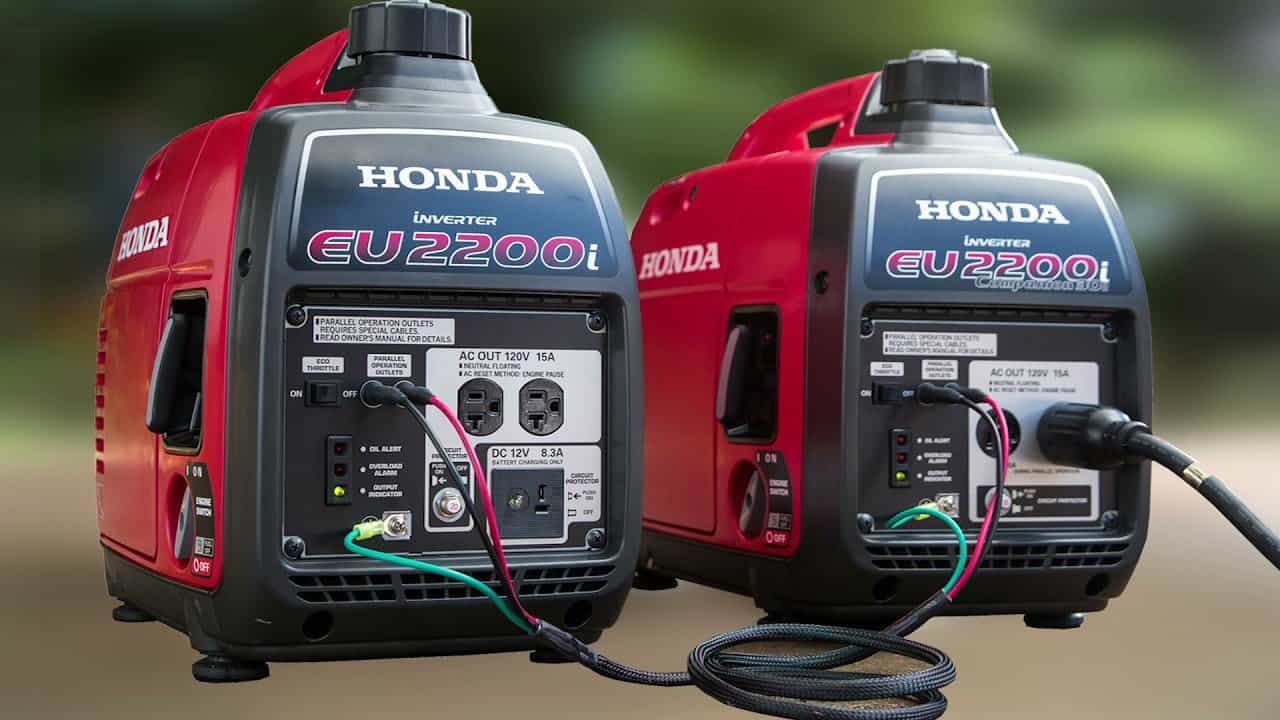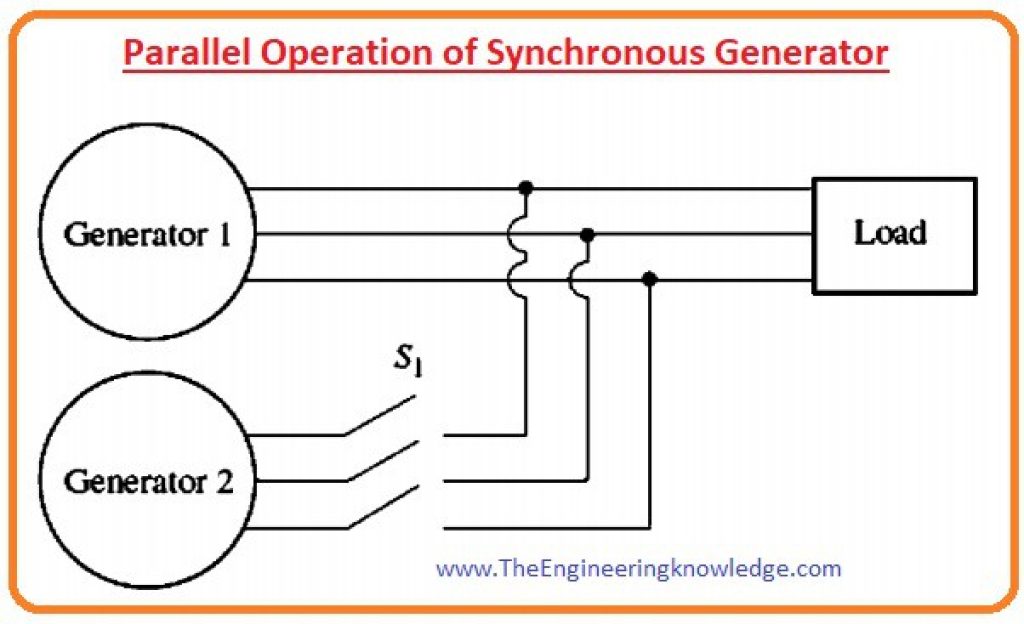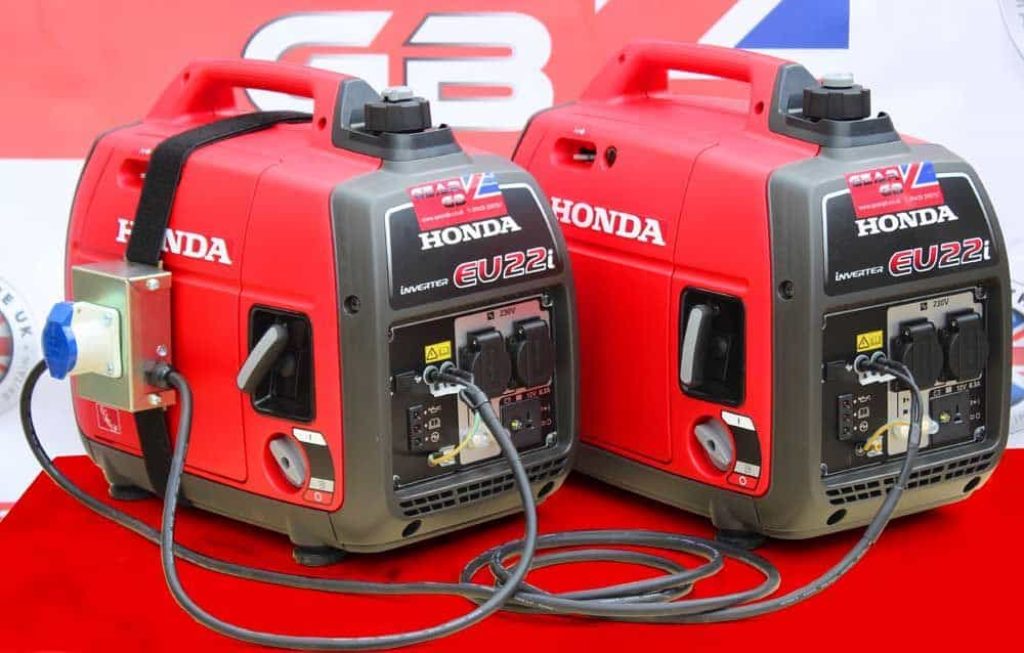
Parallel generators mean that two or more units of the same or different sizes are running with their output cables connected to a single electrical bus.
Parallel Generators: Things You Need To Know
Synchronising refers to the process of getting generators to run in parallel. This process involves matching the frequency and voltage of each generator to combine the electrical supplies.
Parallel Generators: How It Works
If you have a generator and you have to do a parallel setup, here’s how parallel generators work:
To put things easier, a parallel system means that there are two generators where cables are connected to a single line that provides a combined power.

Step 1
The first thing you must do is to make sure that the generators are rated the same for voltage and amperage. If they are incompatible or match, it can cause damage to one or both generators.
Step 2
Using a parallel kit, connect both generators. Always refer to the user’s manual or parallel kit for specific steps of your generators. Make sure to follow the sequence to power the generators.
Step 3
Connect the generators through the parallel kit cable to the power input for your home, RV, or job site. Always follow the instructions and user’s manual to avoid problems.
Compatible Generators
Using similar generators is easy to set up your parallel generators successfully. At least the generators have the same alternator pitch, output voltage, and frequency. It is the easiest approach since the same type of generators or compatible generators shares the same properties – alternators, engines, load-sharing controls, speed, interfaces, and many more.
Incompatible Generators
If you parallel incompatible generators, the system will be more complex. If your generators are the same size (in KW), the parallel system can support a higher priority load. The smallest portable generator limits the maximum priority load if the sizes are different. If this is the case with your generators, the control is quite complicated, and you might need to change the sequence of operation.
If you are using generators of different sizes, make sure that the large loads are dropped out first in case the bigger generator fails, and make sure that the smaller unit will be left with a load it can support.
Placement of the Generators
When setting up your parallel system, you also need to pay attention to the placement of your generators. Remember, water is not a friend to your generator. Place the generator in a dry and waterproof generator shed. Also, make sure that there is enough ventilation for proper airflow. And lastly, the generators should be clear of dust and debris.
Why not buy a larger generator instead?
Maybe you are wondering if you should buy a larger generator instead of doing parallel. Well, here are a few things you need to consider if you buy a larger generator to increase your power supply:
- Purchasing a larger generator will cost significantly more.
- It is more expensive to maintain a large generator.
- Fuel-wise, it is less efficient.
- Larger generators produce a lot of noise and are louder to operate.
- Because of the bigger size, moving or transporting a larger generator will be more challenging.
Benefits of Parallel Generators
Not sure if you should set up a parallel system for your generators? Here are some of the benefits:
- Increased reliability and redundancy – Parallel generator system will help improve reliability and redundancy for critical and non-critical loads. It allows for constant power to critical loads. And if one of the generators fails, the other parallel unit will supply the load.
- Cost-effective solution – The cost of generation increases as the generator power size increases. Thus, synchronizing small generators is more economical than using a single large generator.
- More control and savings on generating costs – There is more control and balance in synchronizing smaller generators. The power supplied by parallel generators is equal to the power provided by one large generator.
- Expandability and flexibility – With the parallel setup, generators can be added gradually when needed. If you have several generators in a parallel system, you can supply a different load without piling up costly units.

Things to Consider in Parallel Generators
With parallel generators, here are a few things that you should look into:
- Check if the generator is compatible with the parallel system. Most inverter generators are parallel-compatible. You can check your user manual to confirm your generator has parallel capacity.
- Know how much power you need. It will help you determine the maximum capacity to operate two generators in parallel. For example, if you have 2000 watts, two generators in a parallel connection can produce 4000 watts.
- Pick or purchase another generator that is compatible with your existing generator. The generators should match in frequency, voltage, and phase number.

Parallel Generators: Things to Remember
When working on parallel generators and synchronizing, it is essential to remember that each of the sets should have the following characteristics:
- Frequency – The frequency of the generators must be the same.
- Voltage – The generators should have the same voltage.
- Phase number – The two systems you synchronize should have the same number of phases. It should be either three or a single phase.
- Phase rotation – The three phases must be matched to prevent power surges and excessive mechanical and electrical stresses.
- Voltage phase angle – The waveforms should be matched, meaning they rise and fall together.
There are also a few questions that you need to consider. These will help you determine the end efficiency of the parallel system.
- How far from the load will your generators be placed? Take note that the longer distances will require more voltage.
- What type of fuel will you need to use? There are generators using propane, gasoline, diesel, and natural gas.
- How long will your generator run, based on the fuel tank size? It would be best if you also considered the load (50%, 75%, or full load).
- Is there enough ventilation for your generators? It will ensure proper cooling and prevent generators overheat.
- Is the generator transported or stationery? Portable generators are equipped with compact and lightweight designs for portability.
FAQ
Why do we parallel generators?
Aside from increasing power, parallel systems are designed to increase efficiency, redundancy, and reliability. With a parallel system, if one generator fails, the power loads are redistributed among the other generators in the system. So, when you have a power outage, and one of the generators fails, you still get a constant power supply. When setting up your parallel system, make sure that you use parallel-compatible generators. They don’t need to be identical generators. Just make sure they have the same characteristics.
What is the advantage of parallel generators?
Parallel generators have several advantages. It is so much better than buying one large generator. It may take time to set it up successfully, but the benefits are highly notable. Parallel generators are easier to maintain than larger generators; they are easier to transport, they are easier to control in terms of load draw, and they produce more power together. Parallel generators let you enjoy a continuous power supply even if one of the generators fails. You can also run them separately or together during an emergency.
Can you parallel two different generators?
The quick answer is yes. While it is much easier to parallel identical generators, you can still connect two different generators into a parallel system. However, the setup will be more complex. To successfully parallel generators, make sure they are parallel compatible. If you are unsure if your generators are parallel-ready, read the user’s manual. Also, always ask the experts to do the parallel system for you to avoid any damage.
Is it costly to parallel generators?
Depending on how you set up your parallel system, it can be costly. The cost will depend on your use and how much power you need. The prices of a lower-watt inverter generator vary a lot. Depending on your needs, you can get generators for between $350 to $900. You need to determine how much power you need because it will help you decide whether it would be much cheaper to run generators in parallel or buy a larger generator.
How many generators can you parallel?
Ideally, you can parallel two generators. You don’t have to parallel identical generators. Just ensure they have the same characteristics; of course, they are parallel-ready. When you parallel, make sure to know how much power you need so you will know what size (in terms of wattage) of generators to get. While most use two generators for their parallel system, others also use three generators, which can be risky.
Conclusion
Parallel generators have different advantages. You do it to increase reliability and redundancy, cost-effective power generation, and flexible load management. If you don’t know how to set up parallel generators, always ask for assistance from the experts.


